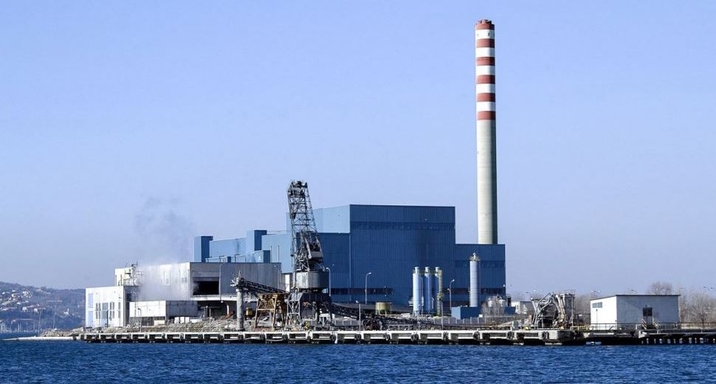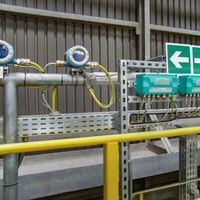Modern Waste Incineration Using Digital Technology

Trieste's waste incineration plant harnesses the benefits of digital technology with FieldConnex®
Application
A waste incineration plant in Trieste, Italy, processes and recovers energy each day from 450 tons of private and commercial waste. The first step in the process is transferring the waste from the waste pit to the combustion chamber. The combustion process creates slag, which is collected in a slag pit. Rising flue gases enter a boiler where they generate electricity via a turbine. A filtering system intensively cleans the remaining flue gas and releases it into the atmosphere as clean air.
In order to run the plant safely and efficiently, it is necessary to measure temperatures and pressures, and continuously inspect valve status at each process step. Running the process requires a range of analysis equipment, motor starters, and frequency converters. There are no explosion-hazardous areas in this incineration plant.
Goal
The modernization of Trieste's waste incineration plant involved replacing the steam turbine, the combustion grate, and the measuring and control technology. The new steam turbine and combustion grate increase throughput and significantly improve the plant’s productivity. Upgrading the measuring and control technology ensures greater plant availability, higher efficiency, and safety in daily operations.
Solution

Simple connection of instruments via FieldBarrier.
As part of the modernization, all 4 mA...20 mA signals were replaced with digital communication. Due to the wide range of devices and application possibilities, the plant operator selected PROFIBUS—connecting analysis equipment, motor starters, and frequency converters via PROFIBUS DP, and choosing PROFIBUS PA for temperature, pressure, flow measurements, and valves.
In this project, the fieldbus infrastructure consists of FieldConnex® Segment Coupler 3 and FieldBarrier. The FieldBarrier, which was originally conceived for explosion-hazardous areas, provides galvanic isolation between device connection and the fieldbus main cable. This significantly increases the installation’s tolerance for ground faults at the device connections, as they do not affect the trunk.
Using this new technology requires supportive training of personnel. For “training on the job”, the automation technicians in Trieste elected to implement the installation and configuration. During this phase, Pepperl+Fuchs experts provided advice and assisted in technical clarifications.
Benefits
Since digital technology requires very little cabling and fewer control cabinets, the PROFIBUS installation was completed faster than expected. In addition, the automatic installation inspection using the FieldConnex® advanced diagnostic module (ADM) accelerated the commissioning—reducing a planned shutdown of the plant. Future extensions will be straightforward, as additional measuring points simply need an available connection at the FieldBarrier.
The FDT/DTM technology and the PACTware™ software platform enable the maintenance team to access comprehensive information for remote diagnostics. This meets all requirements for predictive maintenance and minimizes time-consuming interventions in the field. Users can even parameterize devices right from the control room. Overall, this reduces maintenance costs and increases plant availability.
The operator testifies that the instrumentation connected via PROFIBUS provides detailed diagnostics and remote configuration. They consider this waste incineration plant to be equipped with state-of-the-art technology and ready for the future. Compared to working procedures and data availability, the operation efficiency has significantly improved since the upgrade.
At a glance
- Increased plant availability
- Reduced wiring costs
- Rapid installation
- Comprehensive remote diagnosis data
- Predictive maintenance
- Flexible extension options
- Efficient operation







 +86 10 5901 7000
+86 10 5901 7000